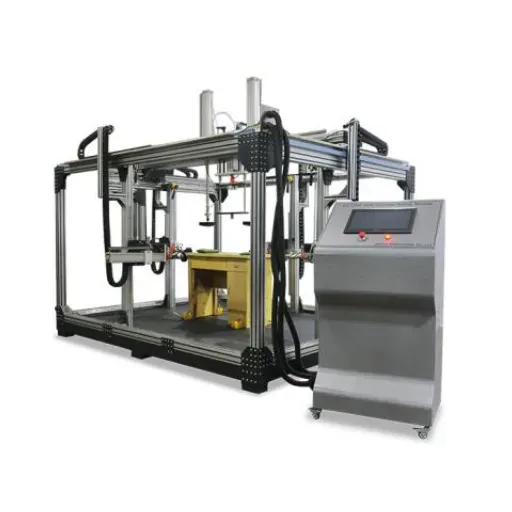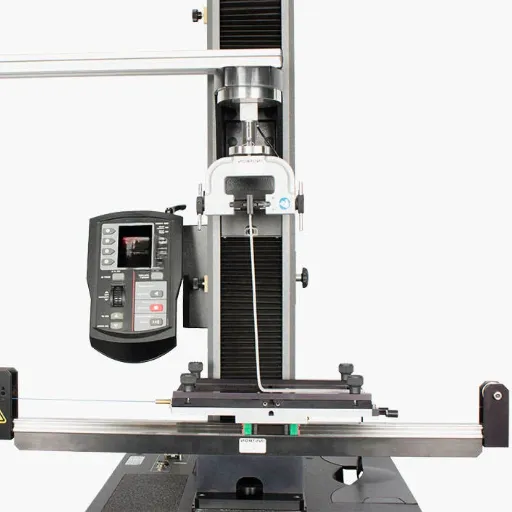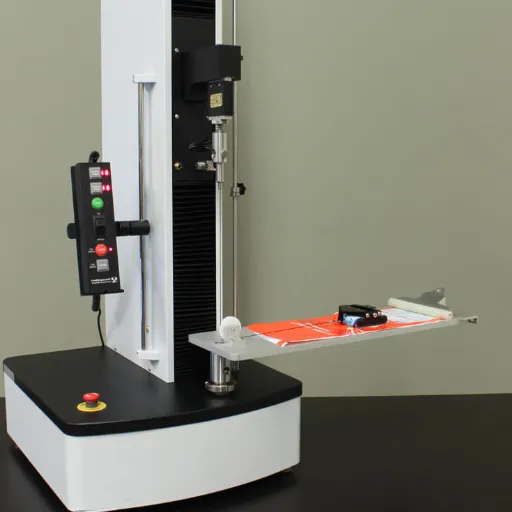Today, customers expect more than just innovative features in a market that is highly competitive; they want something that will last through the test of time. Durability and reliability testing are essential in product development to ensure that items are ready to face real-life conditions and put-through extended use. The blog will discuss how these testing methods operate, raise the issue of failures worth destroying, and investigate the mutual advantages brought about to manufacturers and users. From identification of areas prone to weaknesses to trust-building in the user community, knowing the importance of durability and reliability testing will inevitably aid you in having a product that satisfies or even surpasses the expectations of the user. So continue reading to get key input in designing a strong product that lasts.
The Importance of Durability Testing in Product Development
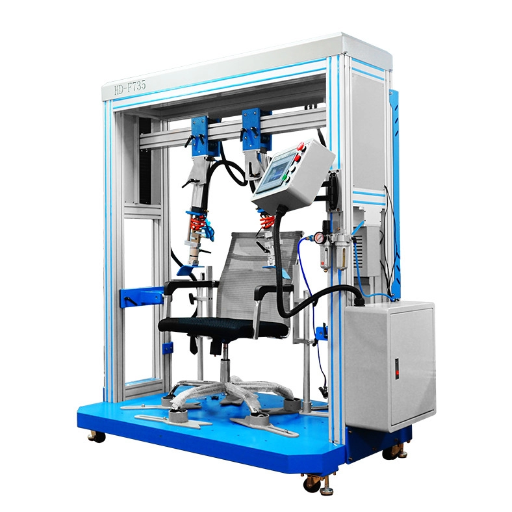
Understanding Product Durability
Durability testing is an integral phase in product development that measures a product’s ability to sustain the rigors of the real-life usage over time. Given that it is impractical to test a product in real-life situations, laboratory testing attempts to simulate stress conditions-varying temperature, vibration, repetitive use, and impact-under which the product may be subjected to. Such testing answers questions about possible design or materials weaknesses. Knowing such weaknesses will allow for some engineering changes to be effected during design for a better product life and service performance.
Durability testing thus entails one of the tests carried out to satisfy the requirements that the product is functional and reliable throughout its required life span. Thus, this testing will avoid a premature failure of the product or initiation of recalls and cost repairs after the product has reached the market. Thus these sorts of standards available for testing a product may actually enhance customer satisfaction and building customer loyalty, as users are likely to rely on a product that has once been in their hands under typical and extreme circumstances.
Environmental Impact: Durability testing: an avenue for environmental sustainability. A product that can last long reduces the upsetting need of replacements, henceforth, dealer in waste generation while conserving resources. In other words, both manufacturers and consumers who invest in durable products end up gaining long-term cost-effectiveness. Durability testing; in essence, stands as the spearhead for giving birth to truly reliable products that last; ones that meet performance expectations as well as sustainability desires.
Relevance in Today’s Competitive Market
Previously, durability testing translated into a gamut of checks and evaluations to ascertain material and component reliability. Durability testing holds significant relevance in today’s competitive marketing environment, where products ensure the production of quality and loftily reliable goods that meet consumer class demands alongside regulatory standards. Consumers of nowadays; the more knowledgeable they become, place utmost concern for lifecycle and product performance. Thus, durability came by as a major selling point for a company, for if they forfeit reputation, they lose their market share. Therefore, one can say that reliable products always satisfy customer needs, building trust and long-term brand loyalty.
Looking at it from an environmental sustainability perspective, durability testing hence addresses a customer’s conscience about reducing waste and in promoting best resource management practices. Durable goods require fewer frequent replacements and repairs; therefore, less material and energy go into their production. This converts well with the increasing consciousness by consumers and industry toward environment-friendly practices, finding businesses on a promising side of the pole rewarding for sustainable innovation.
In addition, durability testing becomes a strategic tool to give a business a competitive edge. Any weaknesses can be detected in a design of the product before they reach the marketplace. From there, the designs can be improved while minimizing recall cases, and the overall value of the product is increased; even factoring in higher manufacturing costs yields long-term savings and delivers the message that a company is committed to excellence, which has tremendous appeal environmentalists and performance-driven customers.
Overview of Durability Testing
Durability testing is a vital process in product development focused upon how a product can perform under loads, wear, or repeated use of time. It serves to certify that the products meet quality standards, safety requirements, and customer expectations. Under simulated conditions akin to real-life scenarios, the manufacturer is made aware of any weaknesses or potential failures in the product before it reaches the market.
This activity virtually subjects the product to some of the conditions that it might encounter in extreme temperatures, mechanical stresses, or usage repetitions, thereby allowing the manufacturers to know the lifespan of the item, with an apparent need to improve the product on identified points. A product that the tests subject to a high degree of pressure or environmental elements must prove by way of demonstration to keep working under its integrity for many years.
Durability plays a significant part in providing reliability to a product; hence manufacturing companies should be able to cultivate consumer trust. The robust and reliable product is less prone to unexpected failures, warranty claims, and customer satisfaction. Basically, durability testing certifies that the product is capable of standing its intended use, which correlates with the requirements and interests of the consumers or the standards set by an industry.
Durability Testing Methods

Environmental Testing
Environmental testing is basically one of the important parts of durability testing that checks and determines how well a product is able to withstand environmental conditions during its lifecycle-it being essentially testing for extreme temperature, humidity, sunlight exposure, or corrosive environments. Simulating such conditions under controlled variables, the manufacturer can bleed the product of its vulnerabilities and therein improve upon its design towards longevity and performance.
- Temperature-humidity testing: Subjects products to cycles of various temperatures plus humidity levels
- UV exposure testing: Simulates prolonged sunlight exposure to assess resistance to fading, cracking, or strength loss
- Corrosive environment testing: Evaluates product performance under harsh chemical conditions
Environmental testing is there to guarantee that the product remains reliable and functional under harsh or unpredictable conditions. This step is crucial for industries that require durability to environmental stresses, like automotive, electronics, and aerospace.
Mechanical Stress Testing
Mechanical stress testing is a very important part of durability testing since it must ensure that all types of products can withstand physical forces and remain functional during the span of their intended use. The testing observes how the product reacts to stresses such as tension, compression, bending, and vibration, simulating the types of conditions it would expect in the real world during use.
- Fatigue testing: Tests the effects of repeated applications of stress over time
- Impact testing: Determines the ability to absorb energy from sudden impact
- Vibration testing: Simulates operational vibrations and their long-term effects
Mechanical stress testing results are of prime significance to assure the integrity of the product and to foster consumer trust. By assessing behaviors under controlled and highly challenging conditions, the manufacturer might curtail unexpected failures, recalls, and accidents.
Accelerated Aging Techniques
Accelerated aging techniques attempt to reproduce the long-term effects of ever-changing environmental and usage conditions to ensure the ultimate product remains durable over time. Exposure of these materials/products to some sort of an aggravating factor-certainly intensified in temperature, humidity, UV radiation, or mechanical stresses-to simulate the wear and tear in years within a fraction of time. By knowing the ways in which materials change or degrade, manufacturers can arrive at a conclusion concerning the life expectancy of a product and can improve design, as well as check for compliance with some industry standard.
Thermal Aging
Puts products into hot surroundings to test heat resistance and material degradation
Humidity Testing
Tests products in high moisture environments to observe swelling, warping, or corrosion
UV Testing
Tests material performance against sunlight exposure for plastics, paints, and textiles
These accelerated aging methods, when combined, provide insightful prediction information on product performance, instilling confidence in consumers, complying with regulatory requirements, and minimizing the cost of failure in the long run.
Tools and Technologies for Durability Testing
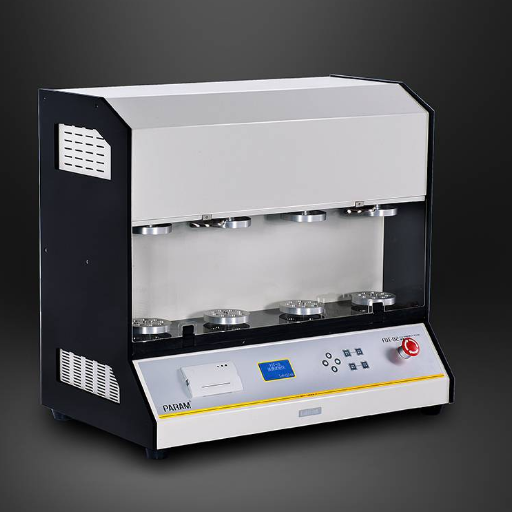
Testing Equipment Overview
Durability testing requires special equipment designed to simulate environmental and mechanical stressors. Key pieces of testing equipment are weathering chambers, tensile testing, and hardness testing. Weathering chambers assess how well a product endures UV exposure, temperature extremes, and humidity. Tensile testing measures materials’ strengths and weaknesses and their ability to resist mechanical forces during use. Hardness testing measures resistance to surface indentation or abrasion because such resistance is very crucial in wear applications.
| Equipment Type | Purpose | Key Applications |
|---|---|---|
| Weathering Chambers | UV exposure, temperature extremes, humidity testing | Automotive, Construction, Textiles |
| Tensile Testing Equipment | Measure material strength and resistance to mechanical forces | Manufacturing, Aerospace, Electronics |
| Hardness Testing Equipment | Surface indentation and abrasion resistance | Metal Working, Tool Manufacturing |
| Thermal Cycling Chambers | Rapid temperature changes, thermal expansion testing | Electronics, Aerospace, Automotive |
| Salt Spray Chambers | Corrosion testing under harsh environments | Marine, Construction, Coatings |
Environmental simulation instrumentation takes center stage in the evaluation of material behavior for long-term applications. Thus, thermal cycling chambers expose the products to rapid temperature changes that may cause potential weaknesses due to thermal expansion or contraction. Corrosion testing instruments such as salt spray chambers test the resistance of materials to oxidative degradation under harsh set environments. These are indeed indispensable equipment for the respective industries like automotive, aerospace, and construction, where environmental durability matters.
Some durability testing systems come equipped with advanced data collection and analysis capabilities. This allows an engineer to keep track of performance metrics in real-time to make further decisions for improvements in product design. Based on having precision land reliable testing equipment, manufacturers sustain maintain the quality standards, reduce possibilities of premature failures, thereby enhancing consumer confidence in their products.
Advanced Technologies in Testing
The very nature of durability testing has gradually taken a plunge into technicalities with the advancement of technology machinery, imparting on posher precision with higher agility for determining product performances. One of the key developments is the automation of testing systems that ensure all the repetitious task is done and done correctly. Encompassing sensors and monitors for real-time data collection on stress, strain, and environmental impacts, these systems can present a comprehensive overview of the longevity of a certain product faced with varied test conditions.
Key Technological Advancements
- Automated Testing Systems with real-time data collection
- Advanced Simulation Technologies for virtual testing
- Predictive Analytics for failure prediction
Another integral improvement lies in the incorporation of simulation technologies. Modern-day computing, engineers can at present build highly realistic virtual environmental conditions that a product could face in its life cycle. This method reduces the time and cost of physical testing and in doing so, it guarantees a design can be identified for a flaw and corrected. Simulations can test extreme or rare conditions that may yet be hard to reproduce inside a testing system.
In the end, the establishment of predictive analytics underwent a fundamental transformation in the approach manufacturers took toward durability testing. Predictive models, equipped with historical performance data analysis, can identify where things might fail and changes to the design for the better could be made, even before one puts a product through physical testing processes. They therefore bestow a higher degree of reliability to the products and drastically lessen the probability of an expensive recall and warranty claims. In unison, these developments speak about how technology is important when it comes to offering reliable and high-quality goods in today’s competitive market.
Software Solutions for Reliability Verification
Durability testing is critical, as it must prove a product’s ability to undergo long duration use with all external stresses typical of such operating conditions. This testing ensures the product performs as expected throughout its life, thereby bringing confidence and satisfaction to the buyer. It is, therefore, necessary to simulate life’s scenarios to identify weak spots and assist in designing stronger and more reliable products.
Effective durability testing subjects a product to repeated cycles of stresses-whether mechanical vibrations, temperature changes, or pressure variations-to analyze how materials and components present within the product react with wear and tear processes along time. On detecting premature failures during testing, the manufacturers may change the designs, material improvements, or processing techniques of the product before it is taken to market.
Durability testing in itself for insuring the balance of performance and reliability reflects the subsequent insights. Avoiding recalls that could otherwise put an economic strain on any company, minimizing warranty claims, and boosting prestige are all a few of the things stemming from this training. In essence, the test for durability further ensures that products remain reliable while the commitment of the customer to a product is guaranteed along with satisfaction, which is basically what makes the global competition today.
Adhering to Industry Standards and Certifications
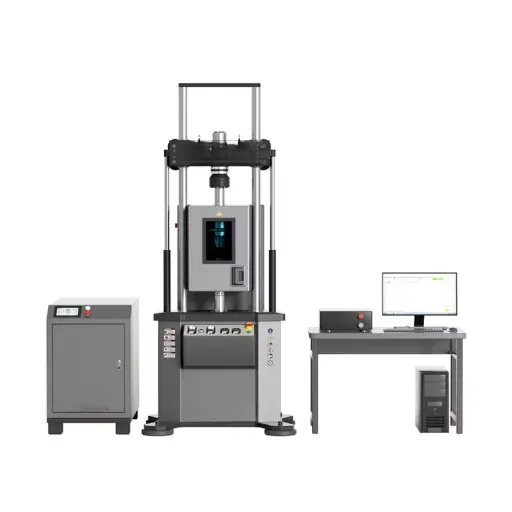
Key Industry Standards in Durability Testing
These durability testing standards and protocols stand as a fundamental principle for establishing quality or performance criteria in product development. Possibly the IEC guidelines can be accounted among the best-known standards with detailed methods governing the testing of different electronic and mechanical products, mostly under stress conditions. These testing conditions help in determining the extent to which products withstand extreme temperatures, humidity, vibrations, and shocks and are thus reliable in varying environments.
Major International Standards
- IEC Guidelines: Detailed methods for electronic and mechanical products under stress conditions
- ISO 9001: Quality management systems
- ISO 16750: Road vehicles environmental testing standards
Another set of standards to be reckoned with belongs to the International Organization for Standardization. Among them are ISO standards, such as ISO 9001 for quality management and ISO 16750 for road vehicles. These give detailed instructions on how to evaluate the durability of products. They create a basis to ensure that a product meets the expectations on the global scale for function and lifespan, most especially in areas where safety or performance requirements rank high, such as automotive or electronics.
Living up to these standards helps the companies achieve consistency, customer trust, and a smoother interaction with regulations. Compliance says commitment quality while reducing the risk factor in product failure or disadvantaging expensive recalls. These standards also help manufacturers build their robust goods and equally play in the momentum world market-a position which benefits consumers and industries alike.
Certification Processes for Reliable Products
Durability testing is vital for certification to ensure that the product is reliable. The product’s performance is tested under various conditions all intended to simulate real-world use over an extended period. It tests to determine if a product may have some potential weaknesses or points of failure so that it complies with suitability for longevity and functionality standards set forth prior to market release.
A product is typically subjected to extremes of temperature, humidity, vibration, and repeated mechanical actions. In replicating these conditions, manufacturers hope to gain insights into product performance under these factors of environment and continuous use. This helps to give an understanding of the life cycle of a product, which can be taken into consideration for changes in design or materials should the product show any weaknesses.
Effective durability testing builds the end-user’s confidence while creating the base for chances of product failures or product recalls. It is, however, required for adherence to regulations and protection of the brand name. A product being tested for harsh use assures the quality of manufacture, and in this way, manufacturers promote sustainability by conversely reducing waste disposal and unstable refills.
Impact of Compliance on Marketability
For products to be marketed and sold successfully, compliance ensures they meet proper safety and quality standards. So, if a manufacturer can prove that he has complied with regulations and ensured adherence through durability tests, he has, in effect, declared that he believes in the reliability and quality of his products. This can trust the consumers and reduce cases of product failure, any kind of recalls, or safety hazards that can cause damage to the company’s reputation.
Consumer Benefits
- Enhanced product safety
- Improved reliability and longevity
- Better value for investment
Manufacturer Benefits
- Reduced recall risks
- Enhanced brand reputation
- Global market access
Durability testing sets a standard that products must meet to withstand real-life conditions with regard to consumer expectations. A product that manages to get through rigorous testing tells buyers that they are safe and will last for a long time, which is what matters most when they make a buying decision. Consumers would rather buy the best-possible-lifestyle-appreciated product, and they see durability as a core attribute of such best investment. Hence, this can be a competitive advantage for the producer and foster long-term loyalty among its consumers.
In addition, entry into wider markets can be facilitated by durability standards. Many countries and industries mandate certified compliance before allowing sales of products. Apart from allowing the manufacturer to enter the markets, meeting these requirements also positions the product as a reliable choice in the global market. By confirming compliance with durability standards, a company builds the reputation for safety and acceptance, extending market reach to a demanding customer base.
Current Trends in Durability Testing
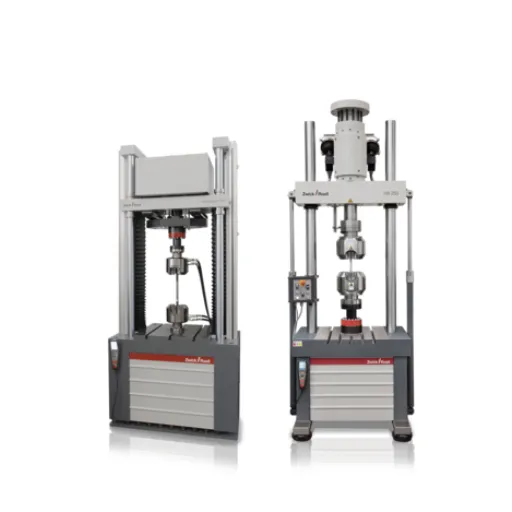
Innovations in Testing Practices
There has been technological progression in the field of durability testing to advance its accuracy and efficiency. Another major advancement is that is conferred by simulation tools that translate, with increased procedural exactness, into real-world conditions. In these simulators, the environmental factors such as temperature variations, humidity, or pressure may all be put in place so that the product may behave properly while in extended use. Likewise, the simulation cuts down the time usually taken in performing physical tests so that a manufacturer can even start production a bit sooner from the prototyping stage.
Major Testing Innovations
Simulation Tools
Advanced virtual testing environments
Automated Systems
Robotics and sensor integration
Machine Learning
Pattern recognition and insights
Another major advance is the integration of automated testing systems that employ robotics and sensors for repetitive testing with consistent precision. Automation thereby enhances repeatability while mitigating human errors. Plus, data gathered in automated testing can then be fed into machine learning algorithms for uncovering greater insights into product behavior and potential failure modalities.
Durability testing has also become a focal point in sustainability. Many testing facilities implement environmentally friendly approaches that include harnessing renewable energy and cutting back on waste generated throughout testing. Creating a synergy between heavy-duty durability standards and environmental issues is a step toward sustainability in testing. These upgrades ensure that the product remains tested for reliability and durability while catering to the ever-increasing demands for responsible manufacturing practices.
Sustainability Considerations in Durability Testing
Durability testing ensures that products fulfill performance requirements while reducing their environmental footprint. Sustainable testing involves methods that conserve non-renewable resources and limit waste generation. To give an example, renewable energy sources, such as solar or wind, can be deployed in the testing plant, thus reducing its fossil fuel dependence. Further, certain physical tests can be supplanted by digital simulations and predictive modeling, thus saving on material consumption and electricity, while not compromising results.
| Sustainability Practice | Implementation Method | Environmental Impact |
|---|---|---|
| Renewable Energy Integration | Solar and wind power in testing facilities | Reduced fossil fuel dependence |
| Digital Simulations | Virtual testing environments | Lower material consumption |
| Waste Reduction | Recycling test materials | Minimized landfill waste |
| Sustainable Materials Testing | Focus on eco-friendly materials | Promotes circular economy |
Tests of sustainability include testing to increase the lifetime of a product. For durability testing means the manufacturer makes a product that lasts longer, so that there are not so many replacements and consumption of raw materials. This, in turn, encourages reuse and recycling and conforms to the spirit of the circular economy. Testing sustains the use of sustainable materials and checks their endurance, also pushing for environmentally friendly manufacture.
In the end, focusing on sustainability in the realm of durability testing is an endeavor to never compromise environmental considerations with product reliability. Transparent communication of the methodologies and results from the tests provides accountability while building confidence among the consumers. If such environmentally conscious practices are pursued, then the manufacturers reduce the negative impact on the environment while simultaneously considering consumer demand for sustainable goods. With innovations blended with a genuine interest in sustainability, the industry now has a clear path towards a more responsible and efficient tomorrow.
Emerging Technologies in Durability Testing
In recent years, durability testing has been revolutionized by innovations that lend a greater degree of precision, efficiency, and reliability to the field. One such innovation is the employment of sophisticated simulation software, which allows manufacturers to test theoretically how a material will respond under various conditions instead of having extensive physical tests done on it. These programs speed up the process of testing by simulating the wear and tear that occurs over a period of time and thereby give an insight into how a product might behave in real-world situations.
Simulation Software
Advanced programs that theoretically test material responses under various conditions, speeding up testing processes and providing insights into real-world behavior.
IoT Integration
Materials sensors and Internet of Things devices measure stress, strain, and environmental conditions in real-time during testing phases.
AI Integration
Artificial intelligence algorithms process test data, identify patterns, and predict results with improved accuracy for faster development cycles.
The other kind of breakthrough comes from coupling materials sensors along with Internet of Things devices. Such technologies measure the materials in the testing phase with respect to stress, strain, and environmental conditions in real-time. These exhaustive details help engineers derive critical points of failure and improve design efficacy-a good prototyping example-to ensure they shall hold up over extended use and some degree of environmental abuse.
In addition, putting AI into use increases the possibilities of durability testing. The algorithms process all the data derived from the tests; they identify patterns in the dataset and subsequently predict results with a fair amount of accuracy. The faster development cycles set the stage for longer product life-span realization. Together, these pathways are revolutionizing the approach that industries have taken in the durability testing field, thereby advocating for more sustainable type and resilient material use.
Frequently Asked Questions (FAQ)
Q: What is product durability testing?
A: It is a process that involves assessing the endurance and efficacy of the products under different conditions. It tests the product’s durability by exposing it to kernel real-world conditions and investigating fail modes in order to make sure the product can withstand normal use with time.
Q: Why is durability testing important?
A: Durability testing helps design engineers find flaws in their designs and determine if a prototype can last over time. Companies strive hard to ensure their products meet standards through rigorous testing and, therefore, undertake a durability test. This helps to assure that the product fulfills the standard requirements of the industry and is performing well in the field.
Q: What are common methods used in a durability test?
A: Common methods in durability testing include accelerated life testing, climatic testing, and vibration testing. These methods simulate various environmental conditions and stress factors that products may encounter, allowing for a comprehensive evaluation of their reliability and performance over time.
Q: How does testing help identify potential failure modes?
A: Testing can help identify potential failure modes by analyzing load data and subjecting products to conditions that may lead to wear and tear. This proactive approach allows manufacturers to make necessary improvements before products reach the market.
Q: What role do testing services play in product development?
A: Testing services provide essential insights during the product development process. They offer durability testing solutions that help assess the durability of a product, ensuring it meets safety and performance standards before launching it to consumers.
Q: Can product durability testing be cost-effective?
A: Yes, while not necessarily cheap, product durability testing is cost-effective in the long run. Identifying design flaws and potential failures can hold expensive recall processes and repairs at bay, saving money and improving reliability.
Q: And how do climatic conditions affect product durability?
A: Climatic conditions do really affect product durability. Testing products against a variety of environmental conditions, including humidity, temperature extremes, and UV exposure, will inform how these environmental factors influence product performance and longevity.
Q: What is the importance of conformity assessment in durability testing?
A: The importance of conformity assessment in durability testing lies in the fact that it provides oversight related to the standards and specifications imposed by the regulators. This assessment assures that products withstand normal working conditions and provide reliable performance, thereby fostering consumer confidence.
References
-
Dewesoft – What is Durability Testing and Why Should You Do It?
An overview of durability testing, its purpose, and how it assesses product lifespan and performance. - UL – Reliability and Durability Testing
A guide to services that evaluate product performance under expected and extreme conditions. - SAMaterials – Durability: Types and Testing Methods
A detailed explanation of durability tests, their methods, and how they improve product design. - Caltrans – Method of Test for Durability Index
A technical document describing procedures for measuring material resistance under specific conditions.

